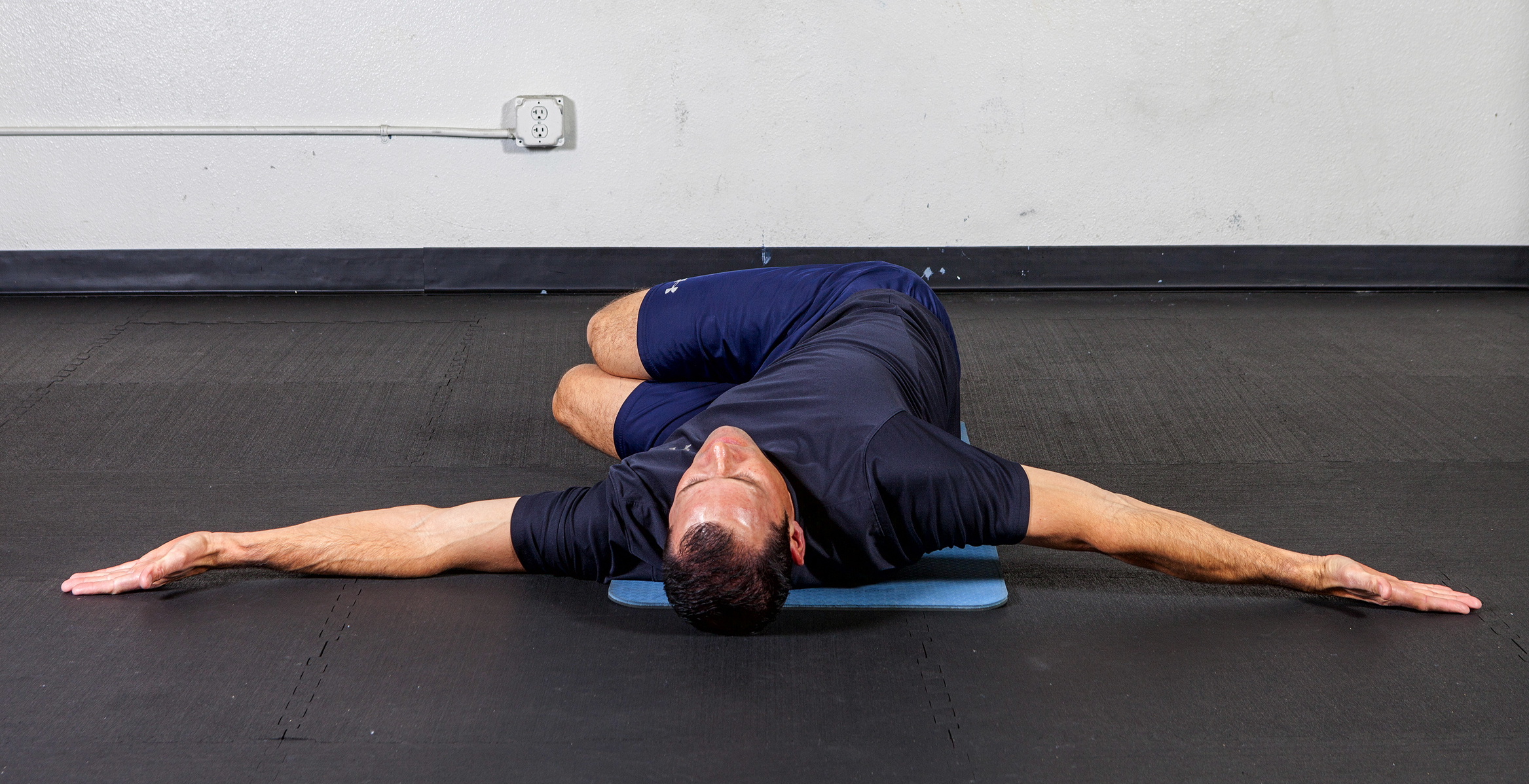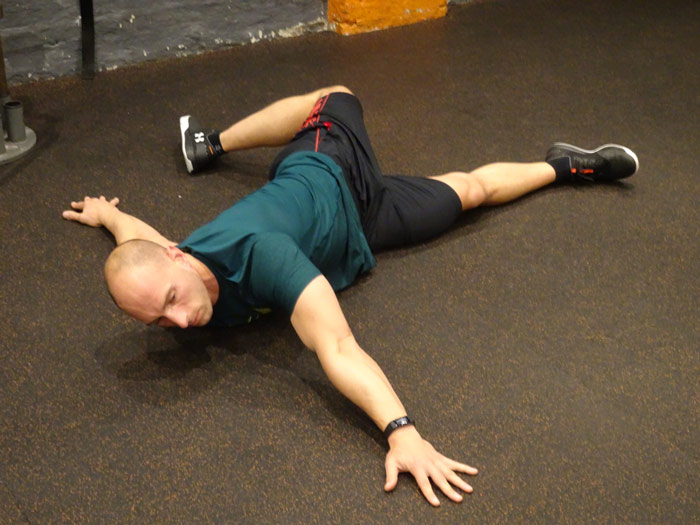

Activate your core and hold this pose for 15 seconds, then release your belly, lower your torso and head to the floor.As you hold the pose, be sure to pull your hips toward your heels to protect your lower back. Stretch your toes to the wall behind you.Lift your upper body away from the floor into a mild backbend, while squeezing your glutes together. Set your elbows under your shoulders and forearms on the floor, parallel to each other.Shoulders, neck, hip flexors, lumbar and thoracic spine 8. Round your spine upward, tucking your tailbone and drawing your pubic bone toward your belly. Slowly raise your head, relax your shoulders away from your ears, and look forward.As you inhale, move into cow pose by pressing your chest forward and up, allowing your belly to sink toward the ground.Begin on your hands and knees with your hands directly under your shoulders and knees hip-width apart.Hold this stretch for 10 seconds, then repeat five to 10 times on each side.Gently lean forward while placing your hands on your bent left leg.Place your right leg straight in front of you, then slowly bend your left knee.


Use your left hand to gently push your elbow in toward the center and down.Extend your right arm towards the ceiling, then bend at the elbow to bring the right palm toward the center of your back, resting your middle finger along the top of your spine.This prepares you for proper form, keeping your shoulders down during this stretch. Lift your shoulders up toward your ears and then lower them back down.Stand with your feet hip-width apart, or sit in a chair with your back straight.Quadriceps, hip flexors extensor tendons (top of feet) 5. Repeat this two to five times, then perform this stretch on the opposite leg.Hold this position for 30 seconds, then straighten the leg and squeeze your thigh.Gently pull your left heel and lower leg towards your tailbone, keeping your left thigh and knee resting on the inside of the leg on the floor.Keep your hips on top of one another so that you don’t strain your quadriceps and hip flexors. Tighten your core to maintain stability through your pelvis maintain this core tightness throughout the stretch.Bend your left knee and pull your left heel up towards your left glute, using your left hand to grab a hold of the top of your left foot.Lie on your right side on a mat or the floor with your legs extended straight away from your body, resting your head on your right arm on the floor to support your neck.Repeat the steps starting 10 times on each side.To release the position, straighten your arms and bring your right leg back into downward-facing dog position.To ensure your hips don’t sag towards the floor, press into your left heel to keep your left leg active.Bend your elbows until your forearms are on the floor, keeping your shoulders above your wrist.Your right knee should be bent at a 90-degree angle and shouldn’t go farther forward than your ankle. Make sure your foot comes all the way forward until your toes are in line with your fingers. Step your right foot forward, outside of your right hand.Hold on to the wall or stair rail as you lower down.Ĭalves, Achilles' tendons 3. Stand on the bottom step with your heels hanging off of the edge.Glutes, hamstrings, quadriceps, calves 2. Continue for 5‒10 reps before switching foot positions.Push back up, keeping your weight on the heel of your front foot.When your knees are bent, your front thigh should be parallel to the floor and back knee should point toward the floor.With your weight on your back leg, bend your knees and lower your body until your back knee is a few inches from the floor.Stand with one foot behind you and one foot in front, about two to three feet apart.The 12 Best Flexibility Exercises for Improving Your Mobility 1. If you’re looking to introduce flexibility exercises into your workout routine, we’ve rounded up 12 below. Instead, doing light cardio exercises (like walking) can get your heart rate up and your blood pumping, which can prime your body for an effective workout and help improve overall flexibility and mobility.īecoming flexible takes time but is well worth it ‒ this is an important step that will prevent workout-related injuries like muscle strains, tears, and sprains because you’ll have a fuller range of motion during your workouts. While normally we associate stretching with the beginning of a workout, current research shows that doing so can actually lead to an increased chance of injury.


 0 kommentar(er)
0 kommentar(er)
